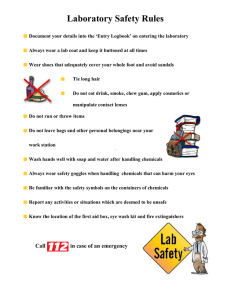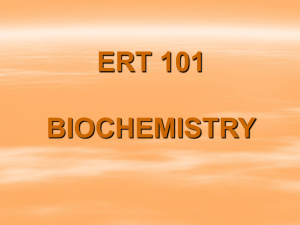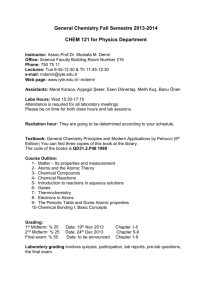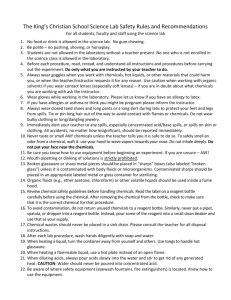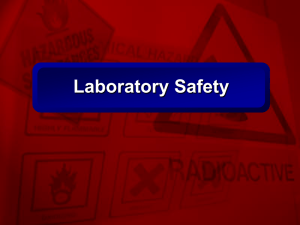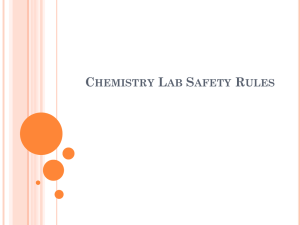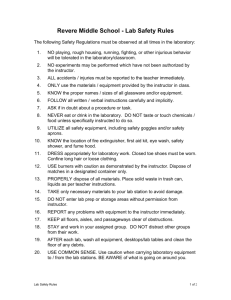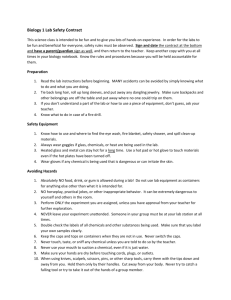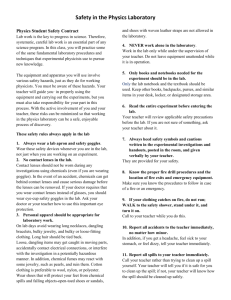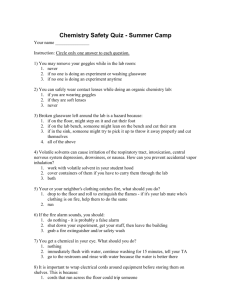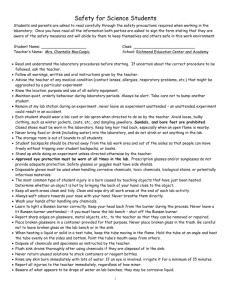Safety Rules
advertisement
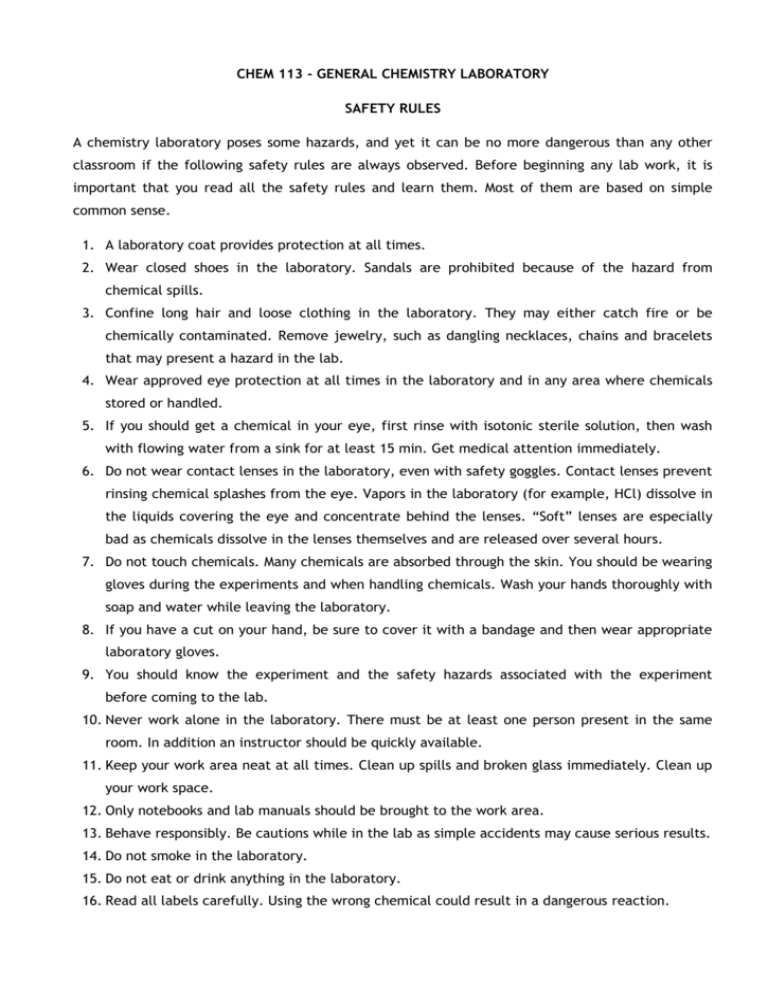
CHEM 113 - GENERAL CHEMISTRY LABORATORY SAFETY RULES A chemistry laboratory poses some hazards, and yet it can be no more dangerous than any other classroom if the following safety rules are always observed. Before beginning any lab work, it is important that you read all the safety rules and learn them. Most of them are based on simple common sense. 1. A laboratory coat provides protection at all times. 2. Wear closed shoes in the laboratory. Sandals are prohibited because of the hazard from chemical spills. 3. Confine long hair and loose clothing in the laboratory. They may either catch fire or be chemically contaminated. Remove jewelry, such as dangling necklaces, chains and bracelets that may present a hazard in the lab. 4. Wear approved eye protection at all times in the laboratory and in any area where chemicals stored or handled. 5. If you should get a chemical in your eye, first rinse with isotonic sterile solution, then wash with flowing water from a sink for at least 15 min. Get medical attention immediately. 6. Do not wear contact lenses in the laboratory, even with safety goggles. Contact lenses prevent rinsing chemical splashes from the eye. Vapors in the laboratory (for example, HCl) dissolve in the liquids covering the eye and concentrate behind the lenses. “Soft” lenses are especially bad as chemicals dissolve in the lenses themselves and are released over several hours. 7. Do not touch chemicals. Many chemicals are absorbed through the skin. You should be wearing gloves during the experiments and when handling chemicals. Wash your hands thoroughly with soap and water while leaving the laboratory. 8. If you have a cut on your hand, be sure to cover it with a bandage and then wear appropriate laboratory gloves. 9. You should know the experiment and the safety hazards associated with the experiment before coming to the lab. 10. Never work alone in the laboratory. There must be at least one person present in the same room. In addition an instructor should be quickly available. 11. Keep your work area neat at all times. Clean up spills and broken glass immediately. Clean up your work space. 12. Only notebooks and lab manuals should be brought to the work area. 13. Behave responsibly. Be cautions while in the lab as simple accidents may cause serious results. 14. Do not smoke in the laboratory. 15. Do not eat or drink anything in the laboratory. 16. Read all labels carefully. Using the wrong chemical could result in a dangerous reaction. 17. Perform only laboratory operations in which you have received instructions and have been given permission. 18. In case of fire or accident, call the instructor at once. Note the location of fire extinguishers and safety showers now so that you can use them if needed. Wet towers can be used to smother small fire. 19. In case of a chemical spill on your body or your clothing, wash the affected area with large quantities of running water. Remove clothing that has been wet by chemicals to prevent further reaction with the skin. 20. Report all injuries to your instructor at once. 21. Avoid breathing fumes of any kind. 22. Work in a hood if there is the possibility that poisonous vapors may be produced. 23. Every time you select a flask, beaker, cylinder or test tube for some experiment, examine it for cracks and broken edges. Under no circumstances use a cracked container. 24. Never use mouth suction in filling pipettes with chemical reagent. Always use a suction device. 25. Allow plenty of time for hot glass to cool before touching. 26. Be careful when heating liquids; add boiling chips to avoid “bumping”. Flammable liquids such as ethers, hydrocarbons, alcohols, acetone, and carbon disulfide must never be heated over an open flame. 27. Always pour acids into water when mixing (not water into acid). Otherwise, the heat generated may cause the water to vaporize quickly and produce splattering of the acid. 28. Never heat a closed container. 29. Dispose of excess liquid reagents by placing them in the appropriate waste bottles. Never return reagents to the dispensing bottle. This could cause inadvertent contamination, and produce incorrect observations by other students. Dispose of solids in solid waste bottle. 30. Before leaving the laboratory, ensure that gas lines and water sources are shut off. 31. Do you have any diagnosed allergies or other special medical needs? YES; ……………………………………………, ………………………………………………, …………………………………….. If yes, please list them in this space NO I have read and understood the Laboratory Safety Rules and have retained a copy for my references. Name, Surname : Date : Signature :
